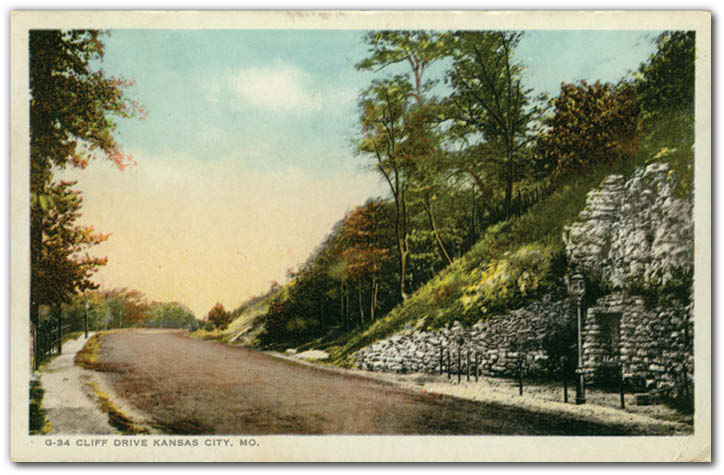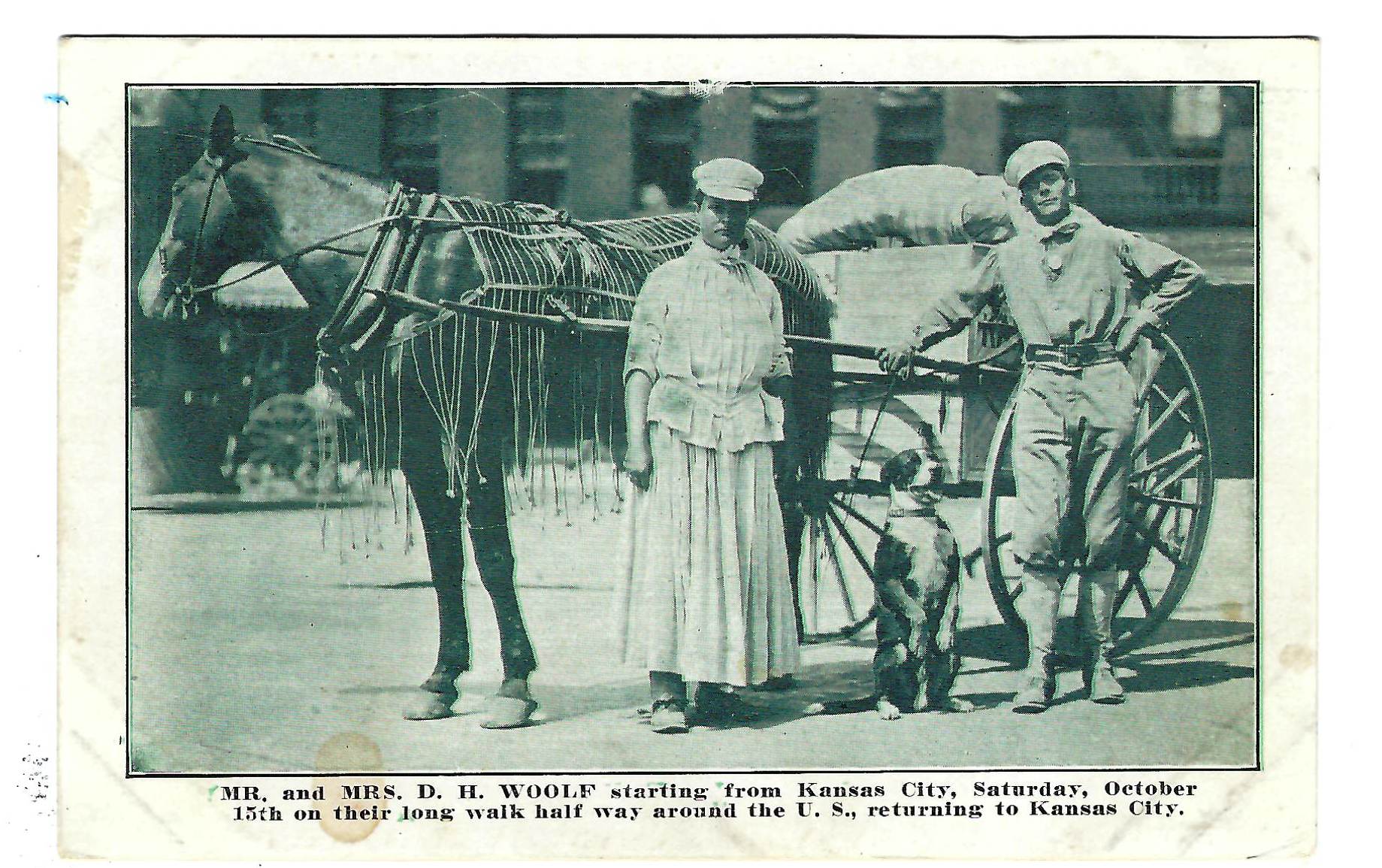By Michael Bushnell
Northeast News
April 29, 2015
“Cliff Drive, Kansas City, Missouri.”
So reads the description on the front of this postcard published by the Fred Harvey Company. The cliffs, located in Historic Northeast Kansas City, offered noted landscape architect George Kessler a great challenge. Kessler, for whom the park is named, had a great dream of developing Kansas City’s natural terrain and natural beauty with parks and boulevards encircling the entire city. With the backing of the city’s first Parks Board, Kessler set to work creating Cliff Drive.
The first section of the drive was completed and opened to the public in 1900. It meandered through the wooded hills of an area known then as North Terrace Park.
Pictures of the day show laborers using horse and mule teams to haul rock and dirt for the completion of the drive. Later, the drive was lit by gaslights, spaced every 100 feet, lighting both the drive and its four approaches.
People from around the Midwest enjoyed drives along the rugged bluffs overlooking the Missouri River flood plains.
The spring, as shown here, is located on the east end of Cliff Drive. The image is how the spring looked after the city’s Parks Department tapped the spring, creating this shell and bowl, making it easier for passers-by to enjoy the water.
The shell, however, was covered in the 1960s after it was found that the spring water was contaminated. During a mid-1980s makeover spearheaded by concerned Historic Northeast residents, the spring took on a new shape of a spectacular waterfall. The card was mailed on Aug. 24, 1915, to Mrs. T. S. Tasker of Ottawa, Ill.
The message reads: “Will arrive home Wednesday night and will write you immediately. Hello to everyone. John.”
The published description on the back of the card, provided by the Fred Harvey company reads: “Below Cliff Drive, part of the park and boulevard system of Kansas City lies a large commercial district known as the East Bottoms. Gridironed with railroad tracks, dotted with great grain elevators and manufacturing plants, it presents an unusual vista of industry. Looking across the Missouri River, the eye finds the great industrial development in North Kansas City. The (Cliff Drive) is 3.5 miles long.”



















